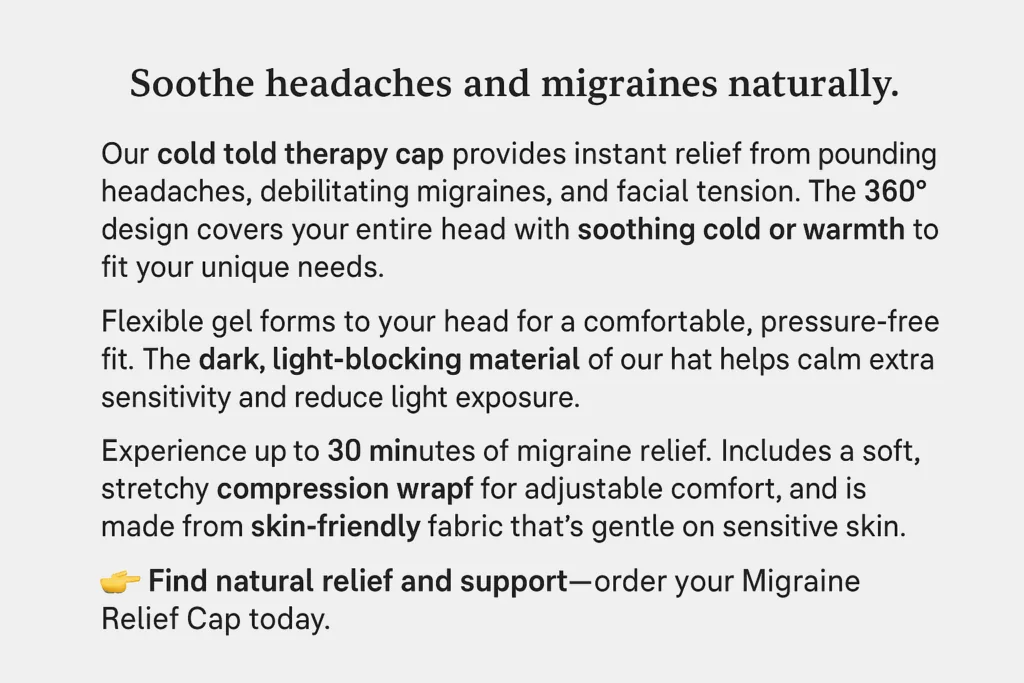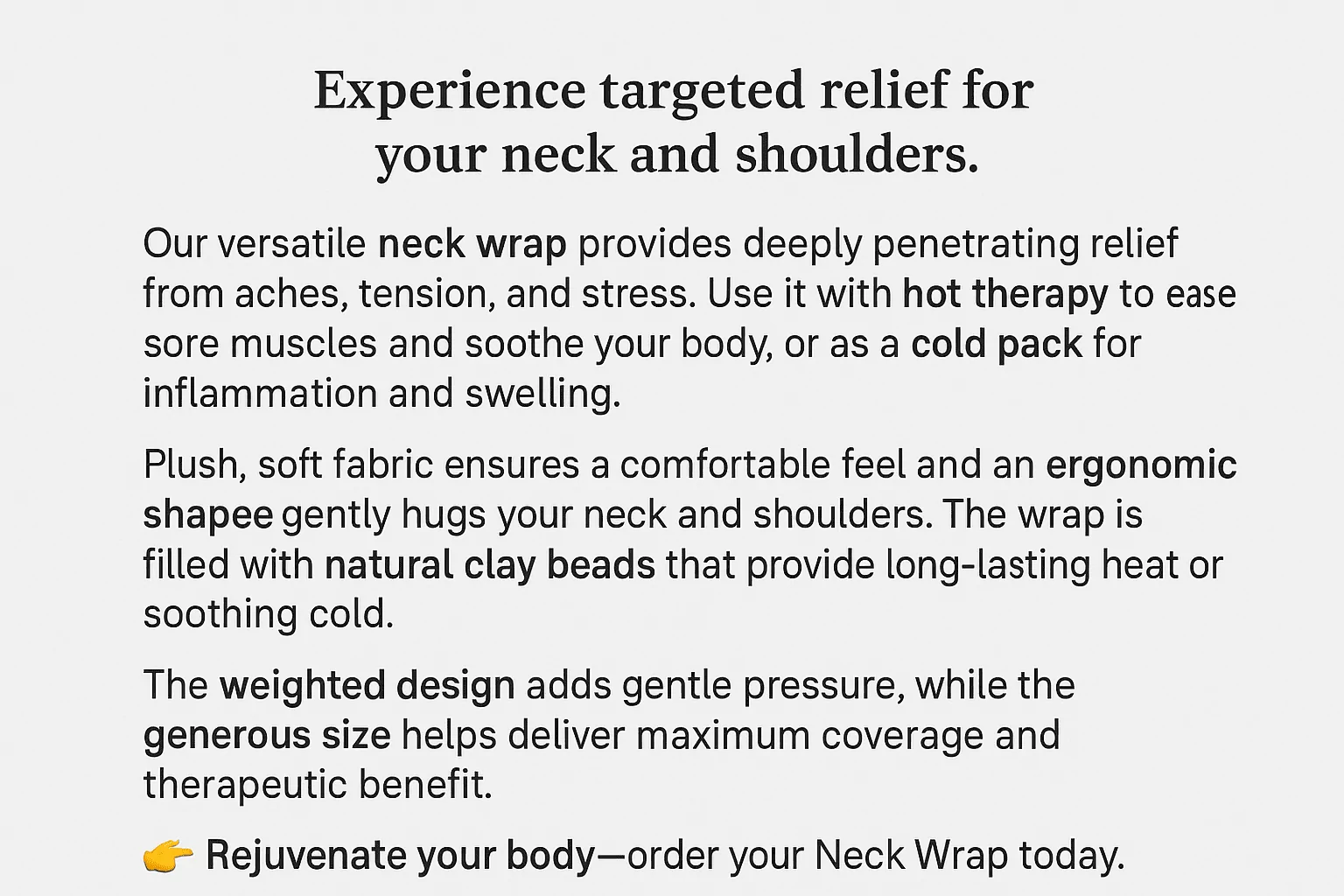When crafting product descriptions, the words you choose can make a big difference in shaping customers’ perceptions. Focus on using language that conjures positive emotions and associations.
For example, describe a sweater as “cozy” instead of just “warm.”
This creates a feeling of comfort and relaxation. Describe a candle’s scent as “invigorating” rather than “strong.” This implies an energizing sensation. Carefully chosen descriptive words allow customers to imagine how they’ll feel using your product.
Also consider the overall tone of your product descriptions. An enthusiastic, friendly tone can make customers feel good about your brand.
Don’t just state product features in a dry, factual way. Bring the product alive with vivid, sensory details that get customers excited to use it. With thoughtful word choices that spark positive emotions, you can craft product descriptions that persuade customers your product is right for them.
Lift your Amazon product listings rankings, clicks, and conversions with proven optimization services.
What are Descriptive Words and How to Use Them?
Think of your brain like it has a little movie screen.
If I say: “I saw a car.”
Your movie is blurry. Any car could show up.
If I say: “I saw a tiny red car with a loud engine.”
Now your movie is clear. You can picture it.
That’s what descriptive words do: they add details so the listener can imagine the scene.
The two main kinds
1) Adjectives = describe things (nouns)
-
a big house
-
a cold drink
-
a friendly teacher
-
a spiky cactus
2) Adverbs = describe actions (verbs)
-
run quickly
-
speak softly
-
laugh loudly
-
walk carefully
The 5-senses trick (easy way to find descriptive words)
Ask: What would I see/hear/feel/smell/taste?
-
See: shiny, dark, colorful, dusty
-
Hear: loud, quiet, squeaky, booming
-
Feel: rough, smooth, sticky, warm
-
Smell: fresh, stinky, smoky, sweet
-
Taste: salty, spicy, sour, crunchy
Quick examples (blurry → clear)
-
“The room was messy.” → “The room was messy and cramped, with clothes everywhere.”
-
“The cat moved.” → “The cat moved silently, like a shadow.”
-
“The food was good.” → “The food was hot, spicy, and crispy.”
Understanding the Psychology Behind Customer Decision Making
Understanding customer psychology is key to developing effective marketing strategies that convert potential buyers into paying customers. There are several psychological triggers that can influence a customer’s decision to purchase a product or service.
Firstly, positive associations and imagery are very powerful. Choosing descriptive words that create positive mental pictures for customers can increase perceived value and make them more inclined to buy.
Using words that tap into the senses such as “refreshing”, “crisp”, “luxurious” or “hearty” help customers visualize enjoying your product.
Secondly, solving pain points is a big motivator.
Customers inherently look for solutions to problems or deficiencies they have. Framing your product as the solution and using words like “quickly”, “easily” or “immediately” to demonstrate it will fix their issues creates a need for what you’re selling. Thirdly, people are drawn to benefits and features rather than just facts about a product.
For example, saying a moisturizer “makes skin visibly radiant” paints a picture of the outcome versus just describing ingredients. Social proof is also highly influential. We are wired to follow the herd, so using words like “best-selling”, “top-rated” or “customers love” leverage that instinct. Lastly, exclusivity and urgency prompt action by catering to our fear of missing out.
Read about: Amazon quit Google shopping and how it impact the sellers
Limited offers using words like “for a short time only” or “only 100 available” can nudge customers towards a purchase. Overall, tapping into these psychological factors with strategic word choices is key for marketing that converts browsers into buyers.
When crafting marketing copy and content, be very intentional with the language used. Words can evoke certain feelings, surface particular memories or associations, and trigger deep desires or needs within customers.
Choosing words that align with the motivations of your target audience is crucial for persuading them to take action. Understand their pain points so you can position your product as the solution.
Identify aspirations or values you can connect to through descriptive words that create positive mental imagery. Leverage the power of social proof by demonstrating satisfaction and popularity. Create a fear of missing out by emphasizing exclusivity or urgency.
The terminology used directly impacts perceptions of your brand and product, so it must appeal specifically to your customers on a psychological level.
An experienced copywriter understands this and can strategically construct language that taps into the emotions, desires and psychology of ideal buyers. When done effectively, the right words make all the difference in nudging customers towards a purchase and building lifelong brand advocates.
Choosing Descriptive Words That Spark Positive Emotions and Mental Associations
Choosing the right descriptive words to describe your product or service is crucial for making positive connections in your potential customers’ minds. The words you use shape the perceptions people form about your offering. With thoughtful word selection, you can spark joyful emotions that get prospects excited to engage with your brand.
When writing product descriptions, aim to use descriptive words that create pleasant mental imagery and associations. For example, words like “refreshing,” “invigorating,” or “revitalizing” can help form upbeat impressions about a beverage product. Phrases like “made with care” and “crafted with passion” also connect your product to positive values like care and passion.
Want to scale your Amazon business into an empire
Additionally, invoke senses like sight, sound, touch, taste, and smell with descriptive words that help customers imagine what it’s like to experience your product. A food product description could use words like “crunchy,” “savory,” “smooth,” and “sweet” to convey textures and flavors. For other products, you might describe visual characteristics like “vibrant colors” or “sleek design.” These sensory details make your product come alive in customers’ minds.
When appropriate, use words that align your product with specific emotions. Products designed to calm and destress could be described as “tranquil,” “serene,” or “peaceful.” Energy-boosting products may parallel words like “motivated,” “driven,” or “unstoppable.” Match the emotion you want customers to feel with words that embody that state of mind.
Additionally, ensure your language is free of negative or dull words that won’t inspire an enthusiastic response. Replace phrases like “contractually required” with more compelling ones like “dedicated to your success.” Swap out tired adjectives like “decent” or “standard” for words like “superb” or “unparalleled.” Paint a positive picture that makes customers feel good about choosing your offering.
Lastly, research words and phrases commonly used by your competitors – and then create your own unique descriptors that help you stand out. Finding your own linguistic niche makes your brand more distinctive in customers’ minds. With creativity and empathy for your audience, you can craft product descriptions full of words that spark joy, excitement, and positive associations – and ultimately drive sales.
Strategies for Selecting the Right Descriptive Words for Your Target Audience
When creating marketing content, choosing the right words is crucial for resonating with your target demographic and building positive associations with your brand. The words you use should connect on an emotional level and convey what makes your product uniquely valuable.
To select the optimal vocabulary, first get to know your audience inside and out through customer research and data analysis. Learn about their hopes, challenges, values, and common objections. This will reveal insights into what messaging and terminology will appeal to them.
For example, are they motivated by efficiency and convenience or interested in eco-friendly and socially responsible products? Does your product alleviate frustrations they experience or enable them to pursue passions?
Choosing Words that Evoke Positive Emotions to Enhance Brand Affinity
Tailor your diction to align with the experiences, priorities, and pain points of your audience. Use words that sound natural coming from their peer group while avoiding industry jargon they may not grasp. Active, conversational language often performs better than overly formal or technical verbiage. Vivid verbs and sensory details help your audience visualize how your product can improve their lives in tangible ways.
Evocative analogies also forge positive connections. Furthermore, borrow key phrases and terminology from user reviews and testimonials to integrate the vocabulary your customers naturally use when describing your product’s benefits.
Additionally, research keywords commonly searched in relation to your offering, along with top performing keywords used by competitors. This reveals valuable data about the precise words and phrases your audience is using to explore solutions like yours.
Work these relevant keywords organically into your copy. You can also A/B test alternate word selections to compare engagement and conversion rates.
Let data guide you toward impactful vocabulary. Finally, collaborate with team members in roles like sales, customer service, and UX design to leverage their insights into language that resonates. Aligning on effective terminology as an organization amplifies its power.
With strategic selection of words tailored to your target market, you shape positive perceptions and drive conversions.
Examples of Perfect Product Descriptions on Amazon
Example 1: Supplements (Vitamin C Gummies)
Delicious daily defense for your immune system.
Support your body’s natural defenses and fight off fatigue with our tangy citrus Vitamin C Gummies. Made using real fruit flavor and a plant-based pectin formula, they’re an easy choice for both kids and adults. Unlike bulky pills, these gummies are light on your stomach and quick to absorb. Each serving packs a high-potency 500mg boost, helping collagen production for healthy skin, strong joints, and lasting energy. Our formula is clean, vegan-friendly, and third-party tested for quality.
Wellness never tasted this good – make them part of your routine today.
Example 2: Home & Kitchen (Memory Foam Seat Cushion)
Instant comfort, wherever you sit.
Transform your office chair, car seat, or gaming setup with our high-density memory foam cushion. Engineered with a cut-out design, it takes pressure off your lower back and tailbone, keeping you supported for hours. The cooling, breathable cover prevents heat build-up, while the non-slip base ensures the cushion stays in place. Backed by ergonomic design principles and expert recommendations, this cushion adapts to your body and maintains its shape over time.
Sit smarter, not harder – discover relief from the very first use.
Check out how the top Amazon home and kitchen sellers are crafting product descriptions
Example 3: Electronics (Wireless Earbuds)
Uninterrupted sound, all day long.
Experience music the way it was meant to be heard with our wireless earbuds featuring advanced noise-isolation. Enjoy up to 30 hours of total playtime with the pocket-sized charging case. Perfect for workouts, travel, or everyday calls, they’re sweat-resistant, lightweight, and ergonomically shaped for all-day wear. With tap-to-control functions and stable Bluetooth 5.3 connectivity, switching between music and calls is seamless.
Compact, powerful, and built for your lifestyle – grab your pair now.
Example 4: Beauty (Hyaluronic Acid Serum)
Deep hydration in every drop.
Revive your skin with our concentrated Hyaluronic Acid Serum, designed to lock in moisture and visibly reduce fine lines. Fast-absorbing and feather-light, it leaves no residue, making it ideal under sunscreen or makeup. Infused with pro-vitamin B5 and soothing aloe extract, it calms while restoring elasticity and radiance. Safe for sensitive skin, dermatologist-approved, and 100% cruelty-free.
Reveal dewy, youthful skin – make it part of your daily glow routine.
Using Descriptive Language to Create Vivid Product Imagery
Using descriptive language is crucial for creating vivid product imagery that helps build positive associations and drive sales.
The words you choose should spark sensory details and emotions that allow customers to envision interacting with the product. Focus on verbs and adjectives that appeal to the 5 senses – sight, sound, smell, taste, and touch. Describe how the product looks, feels, sounds, smells, and even tastes if relevant. For example, describe a shirt as “soft” and “lightweight” or headphones that deliver “crisp, powerful sound.”
Boost your Amazon store with expert Amazon PPC services
Use metaphors and analogies to compare the product to something familiar. Does it feel as “cozy as a warm blanket” or “gleam like a diamond?” Express compelling emotions.
Will the product bring “joy,” “relaxation,” or “confidence”? Tell a story that allows customers to imagine themselves benefiting from your product. Make them feel excitement unboxing it, pleasure using it, or pride owning it. Let descriptive words transport them into an aspirational scenario where the product improves their lives.
In addition to sensory details, use persuasive words that create positive associations and drive desire. Words like “revolutionary,” “magical,” or “life-changing” can spark interest and set grand expectations. Phrases with “ultra-,” “max,” or “pro” connote cutting-edge quality and peak performance.
Use power words like “transform,” “empower,” or “unlock” to suggest the product can greatly impact customers’ abilities or lifestyles. Avoid generic claims like “great quality” or “best in class.” Instead, use vivid descriptions with emotional and aspirational resonance.
The more descriptive language transports customers into an immersive imagined experience with your product, the more likely they are to purchase it to fulfill those desires and expectations.
Conclusion: The Importance of Thoughtful Word Choice in Ecommerce
The words we choose to describe our products and services play a vital role in shaping customer perceptions. Thoughtful word selection helps establish positive associations that encourage sales. When writing product descriptions, focus on using words that evoke the senses, create desire, and convey value.
Appeal to the senses with vivid descriptors for look, feel, sound, taste, and smell. Help customers imagine interacting with your product. Use words that spark emotional connections and hint at the experience your product provides. Avoid generic adjectives and reach for more unique, sensory terms. For example, describe a moisturizer as “velvety” rather than “smooth”.
Include words that create desire. Terms like “irresistible,” “indulgent,” and “craveable” can light up reward centers in the brain. For services, use words like “relaxing,” “rejuvenating,” and “transformative” to paint an aspirational image. Steer clear of unappealing words like “basic,” “standard,” or “ordinary.”
Emphasize value with words like “durable,” “luxurious,” “handcrafted,” and “cutting-edge” to convey quality and excellence. Mention “risk-free,” “satisfaction guaranteed,” and “free returns” to reduce hesitations. Using powerful words that highlight value and minimize perceived risk helps customers recognize that your offering is worth the cost.
Test different word combinations and inspect analytics to see which descriptions perform best. Pay attention to words that invite more clicks, social shares, and sales.
Refine product copy over time to determine the most effective vocabulary for converting browsers into buyers. Thoughtful word choice is foundational for crafting ecommerce content that transforms lookers into customers.








